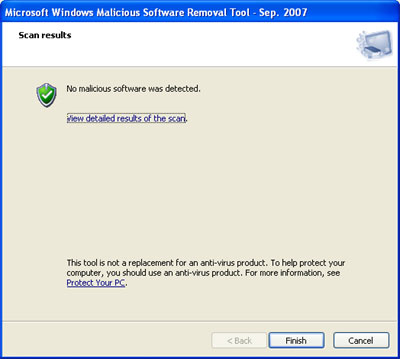Microsoft Removal Tool Kb890830
CoNFicker Ransomware Description Although the CoNFicker Ransomware seems to draw its name from a threat infection that has been around for a while, there is no connection between the CoNFicker Ransomware and previous threats with similar names. How To Install Aum Mod Empire Total War. The CoNFicker Ransomware is a ransomware Trojan released on April 17, 2017, which carries out a typical ransomware tactic. Like most ransomware Trojans, the CoNFicker Ransomware is designed to encrypt the victims' files and then ask for the payment of a ransom in exchange for the decryption key, needed to recover the affected files.
Describes how to deploy the Microsoft Windows Malicious Software Removal Tool (MSRT) in an enterprise environment. Dec 17, 2017 Please, can anyone tell me how to disable Microsoft malicious software removal tool KB890830 from being downloaded and instaled every mounth. Thor Film Dvdrip Ita Youtube on this page.
The CoNFicker Ransomware may be distributed through corrupted email attachments that use corrupted scripts to execute a compromised code on the victim's computer. The CoNFicker Ransomware is being delivered to the victims' computers in the form of a fake version of WinRAR, software used to create, read, and manage RAR archive files currently. How the CoNFicker Ransomware will Attack Your Files When the CoNFicker Ransomware is installed on a computer, it deletes the System Restore points, the Shadow Volume Copies, and other Windows recovery components. It then scans the infected computer's drives for files to encrypt in the attack. The CoNFicker Ransomware will encrypt numerous file types, looking for file formats that could be valuable to the victim. The ESG Threat Scorecard is an assessment report that is given to every malware threat that has been collected and analyzed through our Malware Research Center.
The ESG Threat Scorecard evaluates and ranks each threat by using several metrics such as trends, incidents and severity over time. In addition to the effective scoring for each threat, we are able to interpret anonymous geographic data to list the top three countries infected with a particular threat. The data used for the ESG Threat Scorecard is updated daily and displayed based on trends for a 30-day period. The ESG Threat Scorecard is a useful tool for a wide array of computer users from end users seeking a solution to remove a particular threat or security experts pursuing analysis and research data on emerging threats. Each of the fields listed on the ESG Threat Scorecard, containing a specific value, are as follows: Ranking: The current ranking of a particular threat among all the other threats found on our malware research database. Threat Level: The level of threat a particular PC threat could have on an infected computer.
The threat level is based on a particular threat's behavior and other risk factors. We rate the threat level as low, medium or high. The different threat levels are discussed in the. Infected PCs: The number of confirmed and suspected cases of a particular threat detected on infected PCs retrieved from diagnostic and scan log reports generated by SpyHunter's Spyware Scanner.% Change: The daily percent change in the frequency of infected PCs of a specific threat.

The formula for percent changes results from current trends of a specific threat. An increase in the rankings of a specific threat yields a recalculation of the percentage of its recent gain. When a specific threat's ranking decreases, the percentage rate reflects its recent decline. For a specific threat remaining unchanged, the percent change remains in its current state. The% Change data is calculated and displayed in three different date ranges, in the last 24 hours, 7 days and 30 days. Next to the percentage change is the trend movement a specific malware threat does, either upward or downward, in the rankings. Each level of movement is color coded: a green up-arrow (∧) indicates a rise, a red down-arrow (∨) indicates a decline, and a brown equal symbol (=) indicates no change or plateaued.